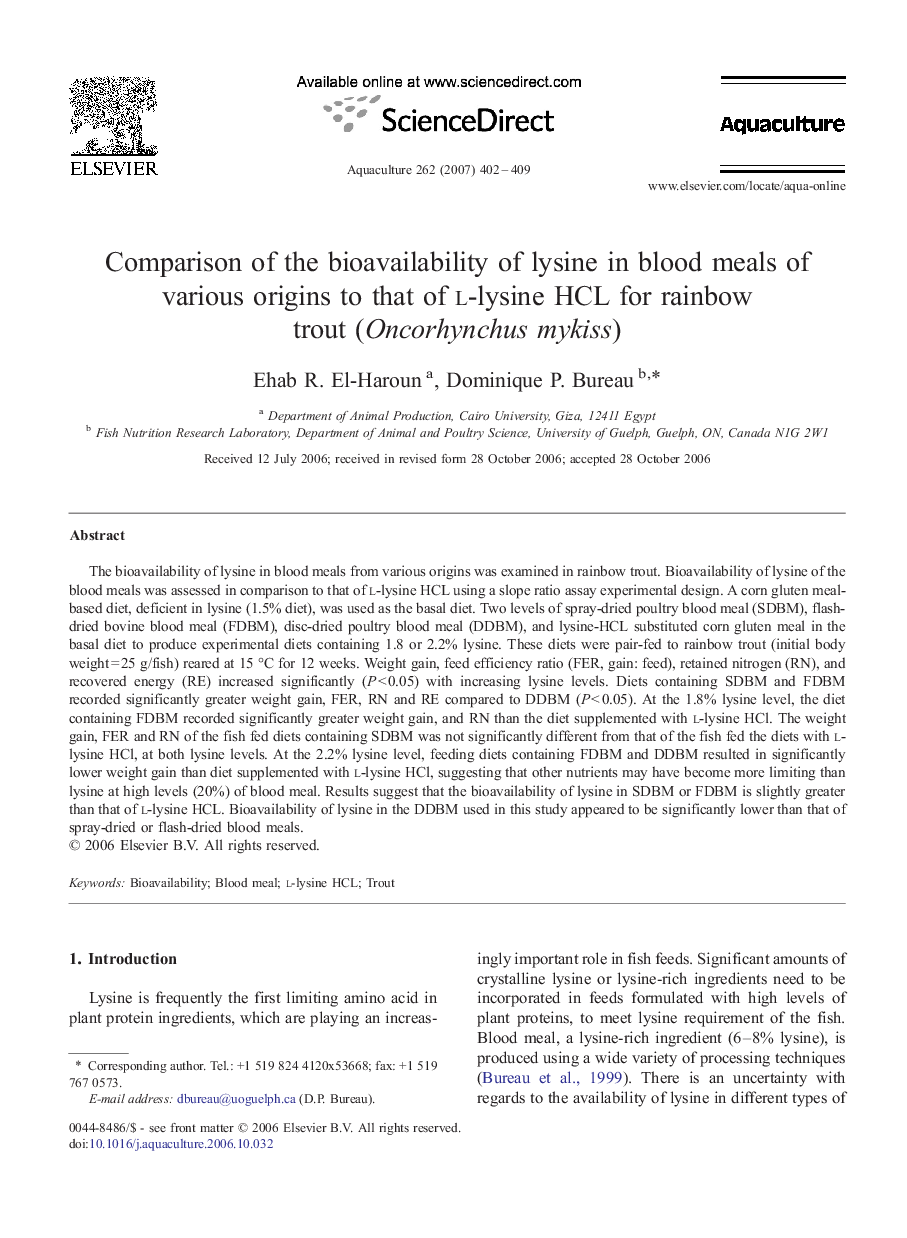| Article ID | Journal | Published Year | Pages | File Type |
|---|---|---|---|---|
| 2425335 | Aquaculture | 2007 | 8 Pages |
The bioavailability of lysine in blood meals from various origins was examined in rainbow trout. Bioavailability of lysine of the blood meals was assessed in comparison to that of l-lysine HCL using a slope ratio assay experimental design. A corn gluten meal-based diet, deficient in lysine (1.5% diet), was used as the basal diet. Two levels of spray-dried poultry blood meal (SDBM), flash-dried bovine blood meal (FDBM), disc-dried poultry blood meal (DDBM), and lysine-HCL substituted corn gluten meal in the basal diet to produce experimental diets containing 1.8 or 2.2% lysine. These diets were pair-fed to rainbow trout (initial body weight = 25 g/fish) reared at 15 °C for 12 weeks. Weight gain, feed efficiency ratio (FER, gain: feed), retained nitrogen (RN), and recovered energy (RE) increased significantly (P < 0.05) with increasing lysine levels. Diets containing SDBM and FDBM recorded significantly greater weight gain, FER, RN and RE compared to DDBM (P < 0.05). At the 1.8% lysine level, the diet containing FDBM recorded significantly greater weight gain, and RN than the diet supplemented with l-lysine HCl. The weight gain, FER and RN of the fish fed diets containing SDBM was not significantly different from that of the fish fed the diets with l-lysine HCl, at both lysine levels. At the 2.2% lysine level, feeding diets containing FDBM and DDBM resulted in significantly lower weight gain than diet supplemented with l-lysine HCl, suggesting that other nutrients may have become more limiting than lysine at high levels (20%) of blood meal. Results suggest that the bioavailability of lysine in SDBM or FDBM is slightly greater than that of l-lysine HCL. Bioavailability of lysine in the DDBM used in this study appeared to be significantly lower than that of spray-dried or flash-dried blood meals.
